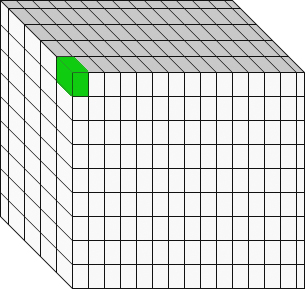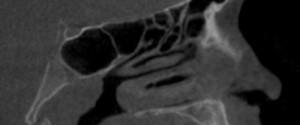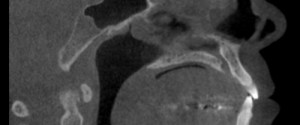Cone beam CT units have a range of slice thicknesses available. Most units fall between 0.1 mm to 0.4 mm slice thickness. There are units with smaller slice thickness available, however I am focusing on the 0.1 to 0.4 mm range for this post. The first thing to understand is what you are changing when you change the slice thickness. As a cone beam CT dataset is a volume of data, the slice thickness is directly associated with the voxel size. A voxel is a 3D ‘box’ of data. In a 2D image the corresponding data is a pixel. Below is an example of a dataset with a single voxel noted in green.
The basic understanding for voxel size (slice thickness) and spatial resolution is that the smaller the voxel size = greater (or higher) spatial resolution. So this would mean a slice thickness of 0.1 mm will provide a higher spatial resolution versus a slice thickness of 0.4 mm. One issue with a smaller slice thickness is that to achieve this it requires more radiation than a larger slice thickness. While using a small slice thickness for increased spatial resolution sounds great in theory, as of now (current research), a 0.3 mm slice will provide the same diagnostic ability as a 0.1 mm slice.
I realize that this information is constantly changing and manufacturers are improving units and software and this may change over time. The reason I have excluded the very small slice thickness is due to a lack of research. If I have missed a paper somewhere, please let me know so that I can add to this post.
Thanks and enjoy!


